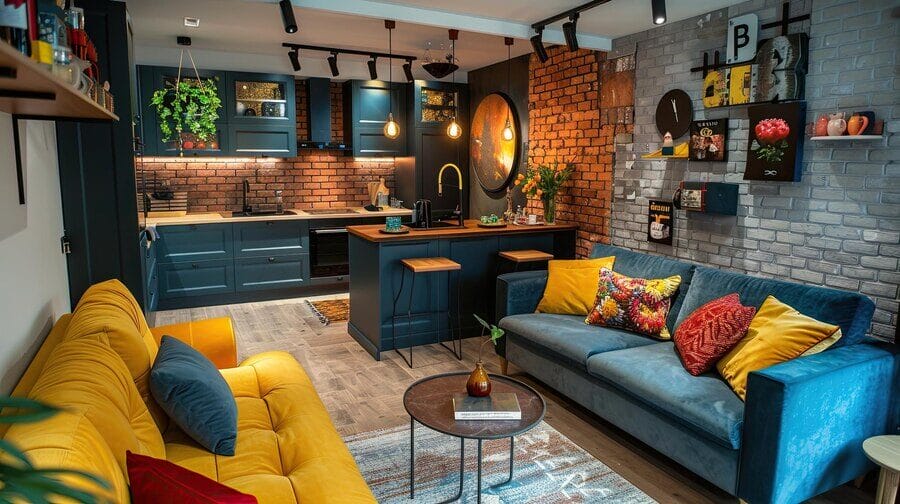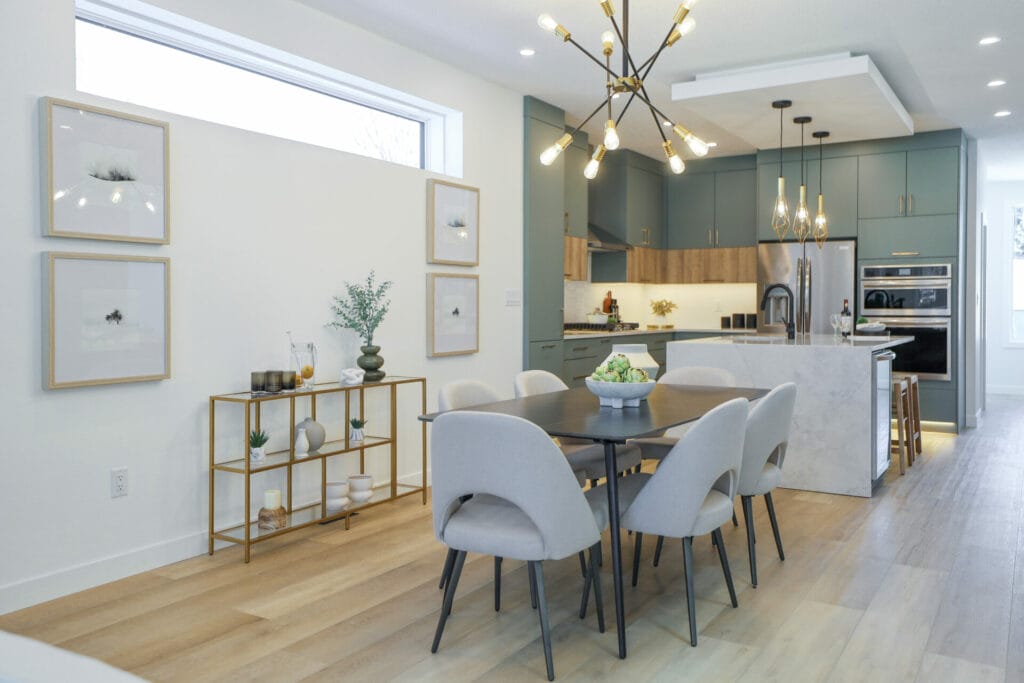Remodeling your home is an exciting but complex project. It offers the chance to refresh your living space and increase its value. However, it also comes with potential pitfalls that can lead to higher costs, delays, and dissatisfaction. Many homeowners unknowingly make mistakes that could have been easily avoided with proper planning and guidance. Understanding these common errors and knowing how to prevent them can save you time, money, and stress. This guide highlights ten critical mistakes to avoid during your remodel based on insights from design experts.
Poor Communication with Contractors
Poor communication can lead to misunderstandings, errors, and delays. It’s important to establish clear lines of communication from the beginning and schedule regular updates to discuss progress, address concerns, and make necessary adjustments.
Clearly define your expectations and provide detailed instructions to avoid discrepancies between your vision and the contractor’s work. Regular check-ins and open dialogue help keep the project on track and ensure that the final result aligns with your goals.
Not Planning for Adequate Lighting
Proper lighting is essential for creating a functional and inviting space. One common mistake is not planning for adequate lighting, which can leave rooms feeling dark and unwelcoming. Effective lighting enhances the overall look of your home and supports various activities.
Incorporate a mix of ambient, task, and accent lighting early in the design process to avoid this issue. Ambient lighting provides overall illumination, task lighting focuses on specific activities, and accent lighting highlights architectural features or artwork.
Ignoring Home Style Continuity
A remodel should enhance the existing style of your home, not clash with it. Ignoring home style continuity can result in a design that feels out of place. For example, modern upgrades might look odd in a historic home if they don’t complement its traditional features.
Maintaining consistency with your home’s architectural style ensures that the remodel blends seamlessly with the original design. Collaborate with a designer to create a cohesive look that respects your home’s character while introducing fresh updates.
Failing to Include Enough Storage
Storage is often overlooked during remodeling, leading to cluttered and disorganized spaces. Effective storage solutions are crucial for maintaining order and functionality. Many homeowners fail to integrate storage into their initial design, resulting in a lack of space for everyday items.
Plan for built-in storage options, such as cabinets, shelves, and closets, from the start to prevent this. Consider your storage needs based on your lifestyle and belongings. Custom storage solutions can be designed to fit your specific requirements and make the most of available space.
Skipping Research on Materials and Costs
Thorough research is essential for making informed decisions about materials and costs. Skipping this step can lead to regrets and unexpected expenses. It’s important to understand the pros and cons of different materials, such as their durability, maintenance requirements, and aesthetic appeal.
Additionally, accurately budgeting for all aspects of the remodel, including labor, materials, and contingencies, helps prevent financial strain. Obtain multiple quotes and factor in a buffer for unforeseen costs. This research ensures that you select materials that fit your budget and meet your needs.
Not Consulting Professionals
Attempting a remodel without professional input can result in costly mistakes and subpar results. Professional designers and contractors offer valuable expertise that can guide you through the process. They can provide insights into design trends, materials, and layout options, helping you make informed decisions.
While DIY projects might seem appealing, professionals can help you avoid common pitfalls and ensure that your remodel is both aesthetically pleasing and functional. Consider hiring experts to benefit from their experience and achieve the best possible outcome for your project.
Rushing the Planning Phase
Taking shortcuts during the planning phase can lead to overlooked details and costly errors. Rushing through this stage often results in incomplete plans and design flaws. It’s essential to dedicate sufficient time to carefully plan every aspect of your remodel, including design choices, materials, and layout.
A thorough planning phase allows you to anticipate potential issues and make adjustments before construction begins. Review and revise your plans as needed to ensure that all details are addressed and the project is set up for success.

Overlooking Practical Functionality
A remodel should be both visually appealing and practical. Overlooking practical considerations, such as room layout and functionality, can impact the usability of your space. Ensure that the design supports your daily activities and enhances the overall flow of the home.
For example, consider how the layout will affect traffic patterns and accessibility. Investing in durable and high-quality materials also contributes to the practicality of your remodel. A well-designed space should not only look good but also meet your needs and provide long-term value.
Neglecting Long-Term Durability
Choosing materials and finishes based solely on aesthetics without considering their durability can lead to frequent repairs and replacements. It’s important to select products that offer long-term durability and can withstand everyday wear and tear.
High-quality materials might have a higher upfront cost but can save you money in the long run by reducing maintenance and replacement needs. Consult with designers and contractors to choose durable options that fit your budget and lifestyle.
Failing to Prepare for Disruptions
Remodeling often comes with temporary disruptions, such as noise, dust, and limited access to certain areas of your home. Failing to prepare for these inconveniences can lead to frustration and stress. Plan ahead for how these disruptions will affect your daily life and make arrangements to minimize their impact.
For example, create a temporary living space if construction affects your main areas. Maintaining a positive attitude and flexibility throughout the process helps you navigate challenges more effectively and ensures a smoother remodeling experience.
Conclusion
Avoiding these common remodeling mistakes can lead to a more successful and satisfying project. You can achieve a remodel that meets your expectations and enhances your home by focusing on adequate lighting, storage solutions, home style continuity, and thorough planning.
You can contact The Staging Place for expert assistance with your remodeling project. Our team offers tailored design and staging solutions to ensure your home transformation is a success.
Frequently Asked Questions
What Are Some Common Home Renovation Mistakes Homeowners Make?
Common renovation mistakes include underestimating costs, choosing poor-quality materials, not planning properly, skipping permits, and attempting DIY projects without the necessary skills. These can lead to higher costs and delays.
How Can I Avoid Going Over Budget During a Renovation?
Create a detailed plan and budget from the start, including a buffer for unexpected costs to avoid going over budget. Get multiple quotes from contractors, and avoid making changes once the project has begun, as this can add expenses.
Why Is It Important to Get Proper Permits for Home Renovations?
Not obtaining the proper permits can result in fines, work stoppage, or issues when selling your home. Always check local building codes and ensure your contractor pulls the necessary permits to stay compliant with regulations.
What Mistakes Should Be Avoided When Hiring Contractors?
A common mistake is hiring the cheapest contractor without checking their credentials or reviews. Always verify licenses, ask for references, and ensure the contractor has insurance. Communication is key, so hire someone who understands your vision and timeline.
How Can I Avoid Delays in My Home Renovation Project?
Plan thoroughly and set realistic timelines to prevent delays. Have materials ordered and delivered on time, and make sure all permits are secured before starting. Clear communication with contractors and sticking to the original plan also help avoid disruptions.


